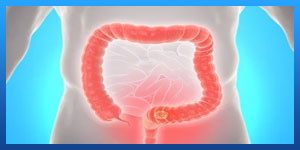Is colon cancer curable at Stage 3?
How long do you live after being diagnosed with colon cancer?
Is Stage 4 colon cancer curable?
Where is the first place colon cancer spreads?
Colorectal cancer staging
Staging is a way of describing the size of a cancer and how far it has grown. When doctors first diagnose a cancer, they carry out tests to check how big the cancer is and whether it has spread into surrounding tissues. They also check to see whether it has spread to other parts of the body.
Cancer staging may sometimes include the grading of the cancer. This describes how similar a cancer cell is to a normal cell.

Read more about: Metastatic myxofibrosarcoma treatment with the best Iranian oncologist surgeon
The following stages are used for colon cancer:
Stage 1 usually means that a cancer is relatively small and contained within the organ it started in
Stage 2 usually means that the tumor is larger than in stage 1, but the cancer has not started to spread into the surrounding tissues. Sometimes stage 2 means that cancer cells have spread into lymph nodes close to the tumor. This depends on the particular type of cancer
Stage 3 usually means the cancer is larger. It may have started to spread into surrounding tissues and there are cancer cells in the lymph nodes in the area
Stage 4 means the cancer has spread from where it started to another body organ. This is also called secondary or metastatic cancer
Sometimes doctors use the letters A, B or C to further divide the number categories. For example, stage 3B cervical cancer.
Read more about: Cervical cancer staging
Read more about: Rectal Cancer Staging Radiology
Read more about: Colorectal Cancer Pathophysiology
Is colon cancer curable at Stage 3?
A stage III colon cancer has about a 40 percent chance of cure and a patient with a stage IV tumor has only a 10 percent chance of a cure. Chemotherapy is used after surgery in many colon cancers which are stage II, III, and IV as it has been shown that it increases the survival rates. Patients with Stage IIIC colon cancer have a 5-year survival rate of 28%. Stage III colon cancer indicates that lymph nodes are involved. Adjuvant FOLFOX only reduces the risk of recurrence of colorectal cancer by 40%, so almost 50% of patients still die from the disease.
Read more about: Colorectal Cancer Recovery
Read more about: colorectal cancer treatments
How long do you live after being diagnosed with colon cancer?
Stage IV colon cancer has a relative 5-year survival rate of about 14%. This means that about 14% of people with stage IV colon cancer are likely to still be alive 5 years after they are diagnosed. But you're not a number. Colon cancer survival rates tell you the percentage of people with colon cancer who are still alive after a certain number of years. Many colon cancer statistics involve a five-year survival rate.
For example, if the five-year survival rate for localized colon cancer is 90 percent, that means that 90 percent of the people diagnosed with localized colon cancer are still alive five years after their initial diagnosis.
Keep in mind, statistics don’t tell individual stories and can’t predict your individual outcome. It’s easy to get caught up in prognosis and outcomes, but remember that everyone is different. Your colon cancer experience may be different than that of someone else, even if you have the same staged disease.
It’s also important to understand new treatments, as clinical trials are continually developing novel treatment options. However, it can take several years to quantify the success and significance of those treatments on life expectancy.
The impact of newer treatments on colon cancer survival rates isn’t included in the statistics your doctor may discuss.
Read more about: How you can Prevented from Colorectal Cancer?
Read more about: colorectal cancer risk factors
Is Stage 4 colon cancer curable?
A growing number of people with stage IV colon cancer live longer than 2 years. And for a small group of people with cancer that has only spread to your liver or lung, surgery might even cure it.
Where is the first place colon cancer spreads?
Colon cancer most often spreads to the liver, but it can also spread to other places like the lungs, brain, peritoneum (the lining of the abdominal cavity), or to distant lymph nodes. In most cases surgery is unlikely to cure these cancers.
Read more about: Rectal Cancer Staging
Read more about: Bladder Cancer Staging
Read more about: Colorectal Cancer treatment


